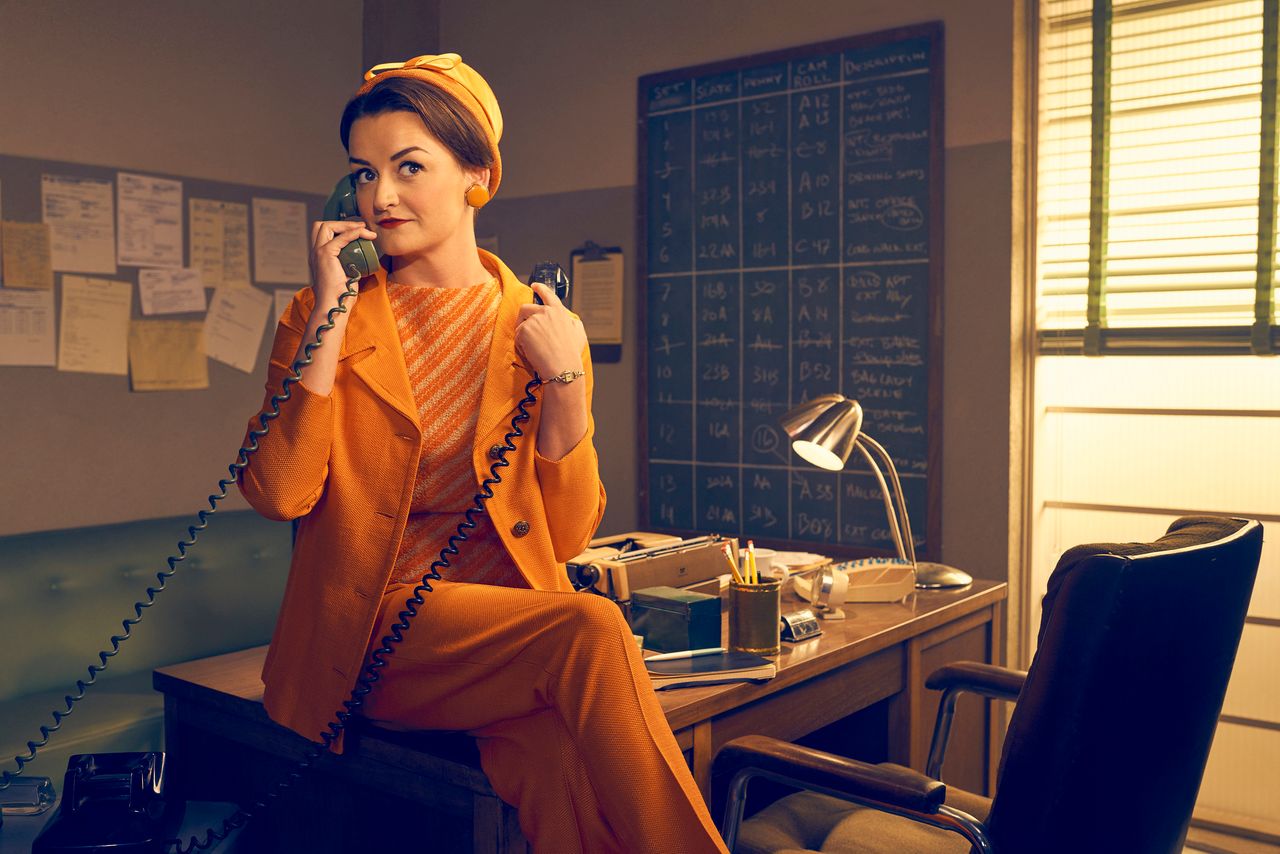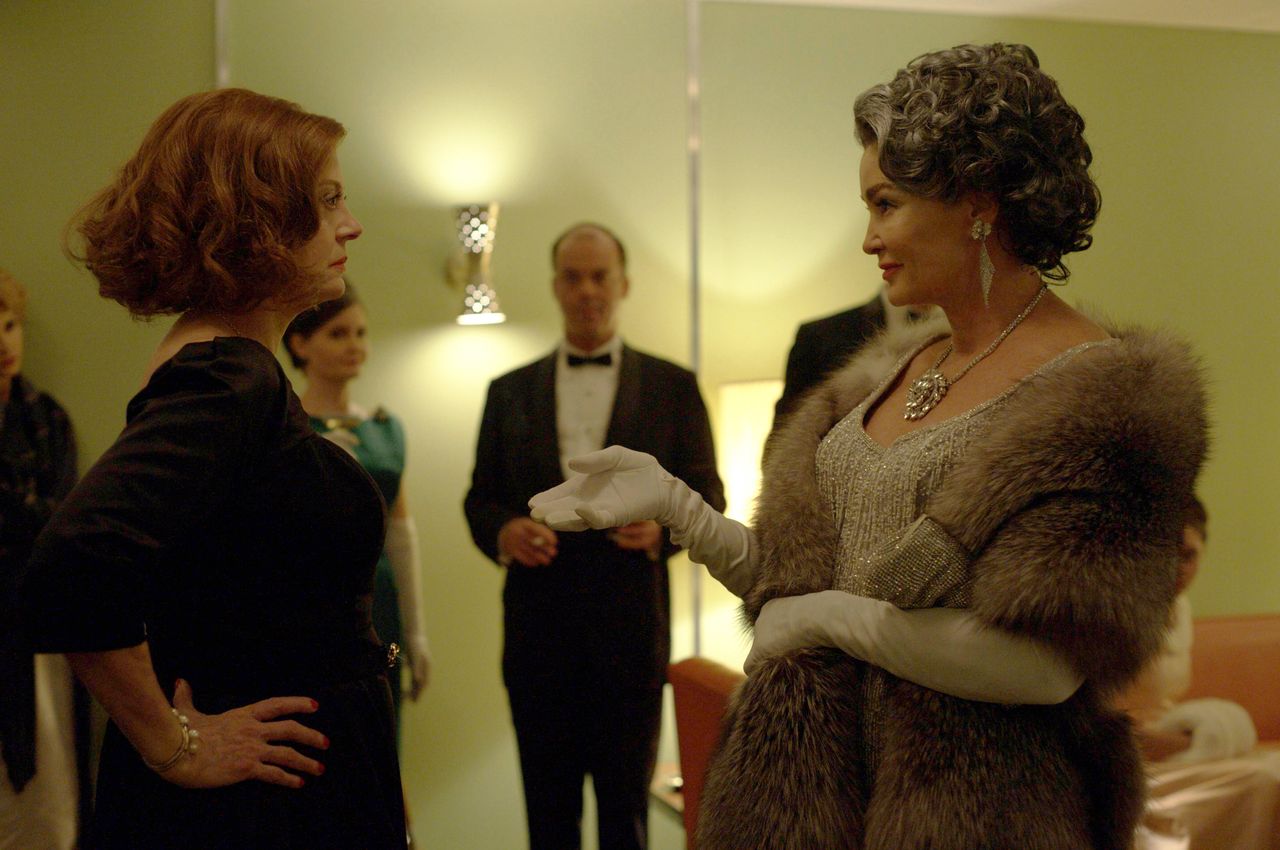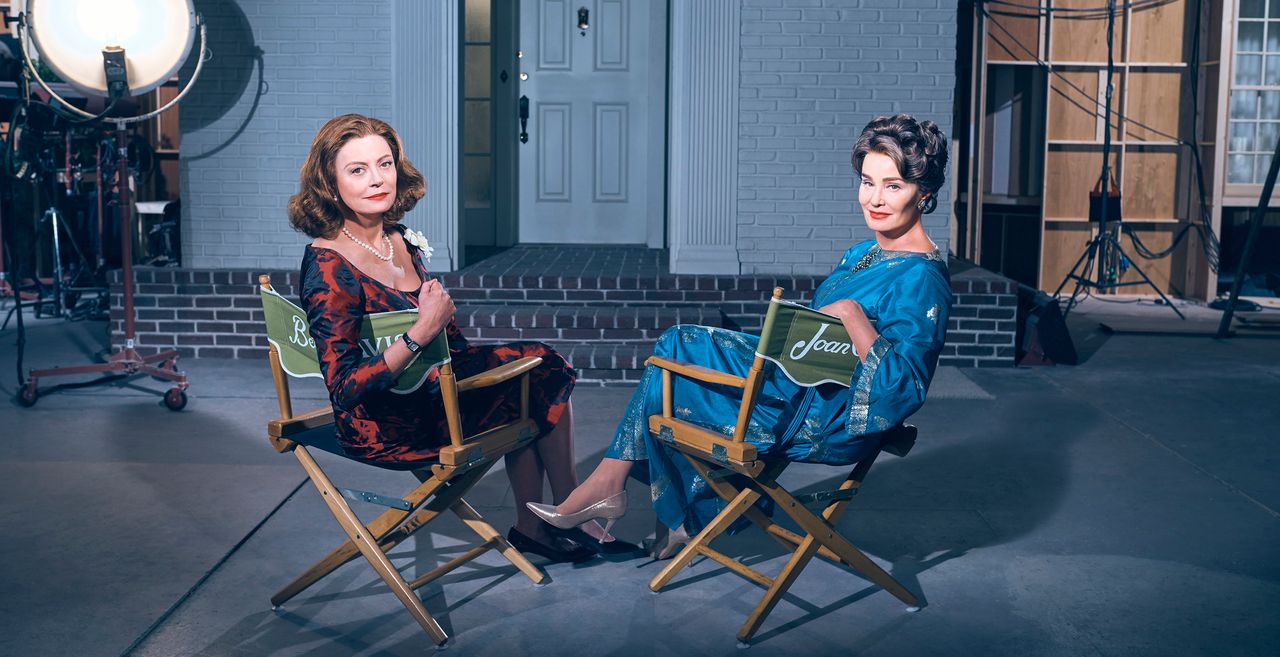Warning: Small spoilers for “Feud” below. But let’s be honest, can you spoil history?
By the time Joan Crawford and Bette Davis started work together on 1962’s “Whatever Happened to Baby Jane?” they were starving for roles.
In the ‘30s and ‘40s, they had been Hollywood stars. But by the early ‘60s, they were in their 50s ― ancient by Hollywood’s standards of women then and still today. “Whatever Happened to Baby Jane?” represented the best script they’d been offered in ages. Oscar potential, even.
The trouble was, the pair couldn’t stand each other. In FX’s “Feud,” which chronicles the real-life rivalry between Crawford (Jessica Lange) and Davis (Susan Sarandon) surrounding production of the film, the two women are forced to reckon with a conflict fueled for years, in large part, by increasingly limited offers for women their age.
“You know how it goes,” laments a beautician working a thick cream into Joan’s neck in the first episode. “Men age, they get ‘character.’ Women age, they get lost.”

“Feud,” created by Ryan Murphy of “American Horror Story” fame, is not shy about its message: Hollywood was lousy with ageist, sexist thinking back in the day. As studio boss Jack Warner (Stanley Tucci) observes, scotch may get better as time passes, but “broads, they just get sour,” a line that could just as easily been delivered in 2017. (If behind closed doors.)
There are many moments that illustrate the continued sexism of Hollywood, but perhaps none better than one quietly moving scene between Joan’s housekeeper-slash-body-woman Mamasita (Jackie Hoffman) and the director’s assistant Pauline (Alison Wright).
At a time when there were few, if any, women directors of “talkie” films, Pauline wants a chance at the helm ― but has faced rejection. Mamasita imparts encouragement with information from U.S. Census reports she’d read in the library, telling her dejected friend how women had recently begun to outnumber men in the U.S. population.
“Should someone tell the men they’re going extinct?” Pauline jokes.
“Not extinct,” she is corrected, “Minority.” Men “have shorter lives because they are less strong, and many die in war,” she said, explaining their decreasing number and suggesting Hollywood would soon have to reckon with the reality of audience demographics.
“Studios will have obligations to make half of stories about women, by women, for women,” Mamasita says. “It only makes economic sense. Keep your head up. Your day is coming.”
But 50 years after the events in the show, those predictions have yet to manifest. Pauline ― a studio insider and experienced hand on set ― might have just as hard a time directing her film in 2017. Crawford and Davis might have just as tough a time finding meaty roles. And that’s what makes watching “Feud” feel so familiar.
Most films are still made about men, by men and for, well, everyone, through lack of other options. Women made up just 4 percent of those who directed 1,000 popular films from 2007 to 2016. While women can now find more work in short-form and independent films, they’re still not trusted, it seems, with the wide-release fare that costs studios tens of millions of dollars. Pauline’s day may come, but it hasn’t yet.

Studies consistently show a wide gap between the number of speaking roles allotted women and men in popular Hollywood films, too.
For older actresses, the picture is bleaker still ― particularly in lead roles like the ones Crawford and Davis tackled in “Baby Jane.”
Characters past age 60, regardless of gender, are underrepresented, according to a recent study, but that’s especially true for women. And over half a century after “Baby Jane” debuted to critical acclaim, older lead characters are still very rare in lists of Oscar nominees. The same study found that zero female characters over 60 appeared as leads in the 25 films nominated for Oscars in the past three years. Gender aside, there were only two lead characters aged 60-plus during that time. Michael Keaton played them both.
Although Crawford and Davis played characters in their mid-to-late 50s, being similarly aged themselves, it’s likely they would’ve been fighting the same fights today.
That’s even when women outnumber men by millions, and even when female-led films have been shown to crush box office expectations.
“Feud” creator Murphy knows this. In an interview with Entertainment Weekly, he stressed the feminist motivation behind the new series’ inaugural season, explaining that he “wanted to tell a story about modern issues that are facing women today, and, oddly enough, nothing’s changed.”
“You’d think things have progressed. They have not,” he said, diving into a laundry list of problems in Hollywood. “So really it’s a show about sexism and misogyny, and why aren’t women being paid as much as men, and why in our culture we have ‘It’ girls and not ‘It’ boys, and why do women feel there’s only room for there to be one successful woman at a time?”
In “Feud,” we watch two legendary actresses scheme to undermine each other’s odds at scoring another Oscar for her shelf, frustrated that the industry they love no longer seems to love them back.
It’s a great comedy but, as Murphy said, also a great tragedy.
